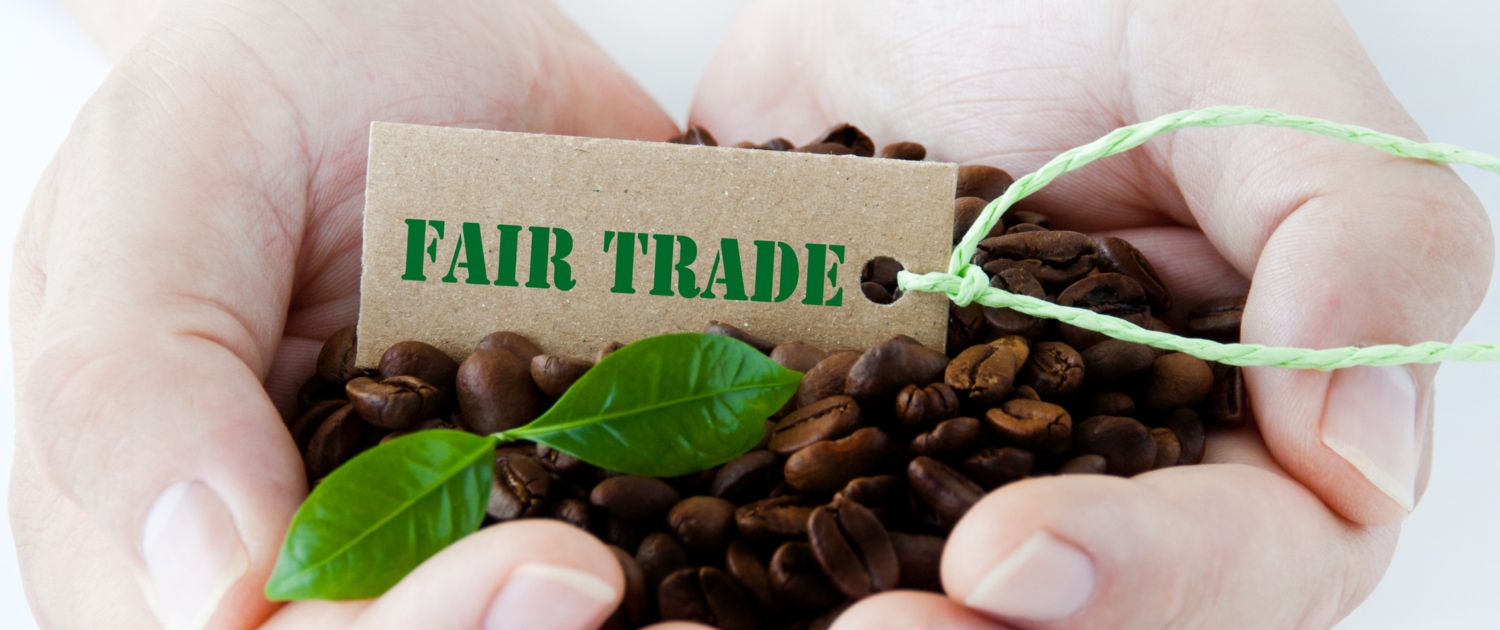Coffee and Fair Trade
– Is Fair Trade Coffee Good or Bad? –
Many people love coffee.
In fact, coffee is one of the most popular beverages in the world.
Besides of its huge variety of coffee drink creations, the energizing dark liquid also comes with a lot of great health benefits, as well.
Some coffee enthusiasts even say that it makes them happier and live longer.
But, many people do not only drink and enjoy a cup of coffee each morning. Even more people’s incomes depend on these little coffee beans one way or the other.
Quite ironically and even until this day, the greatest worldwide coffee producers are commonly the poorer countries. Whereas the biggest coffee consuming nations are the wealthiest ones.
The market and potential business opportunities are huge within the coffee industry. But, not everyone may benefit from it the same way.
And, usually it is the coffee farmers that are at disadvantage and left behind the most.
This is where the idea of fair trade coffee comes into play.
But, what is the real connection between coffee and fair trade? When people are spending more money for certified fair trade coffee products, do the actual farmers actually benefit from it?
Are we really helping them in the long-run? So, the essential question becomes, is fair trade coffee good or bad?
Throughout the recent years, the idea of coffee and fair trade has steadily gained more popularity.
However, many people and end-consumers are still wondering if they are eventually doing something better or not.
Here is an honest and personal opinion about coffee and fair trade.
Coffee and Fair Trade – Pros and Cons
In essence, the idea of Fair Trade is really good, of course.
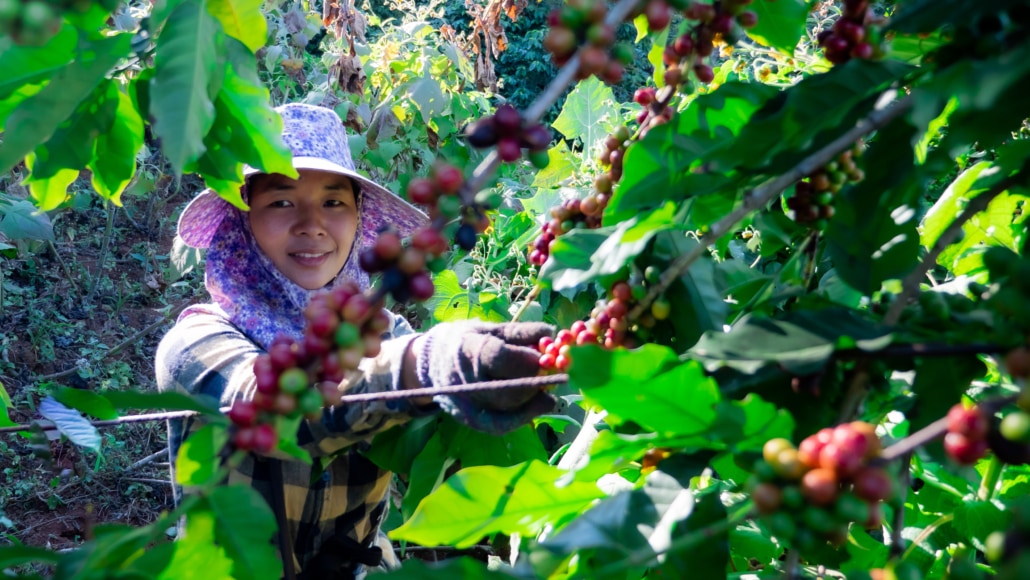
The general problem or challenge rather lies somewhere else. Throughout the years, the Fair Trade Model has not really changed very much since the idea of Fair Trade was created.
Many people wholeheartedly understand and support Fair Trade, as do we at Siam Hills Coffee as well.
However, there are also clear indicators that coffee being marketed and sold as Fair Trade is actually often different, compared to the used coffee and its actual production process.
In fact, if you really take a closer look, it doesn’t take much to get a better picture.
Pessimistically speaking, one could say that Fair Trade is sometimes not living up to its own core standards and promises anymore.
This main promise would be to sustainably reduce poverty.
Many doubters will say that Fair Trade may eventually disadvantage coffee farmers. Their own lives may not significantly improve much. Despite the fact, that coffee as a whole commodity is constantly and very successfully growing and further expanding its market share across the entire globe.
So, is everything just about the relationship between coffee and fair trade, now?
Not entirely, I would say in my own opinion. There is still a lot to love about Fair Trade. In order to get a better understanding, let’s dig a bit deeper.
Maybe there are some ways on how to make Fair Trade by today’s modern standards.
What is Fair Trade Coffee?
In general, the concept of Fair Trade is a certification model. Essentially, you can apply it to all of kinds of things, including coffee.
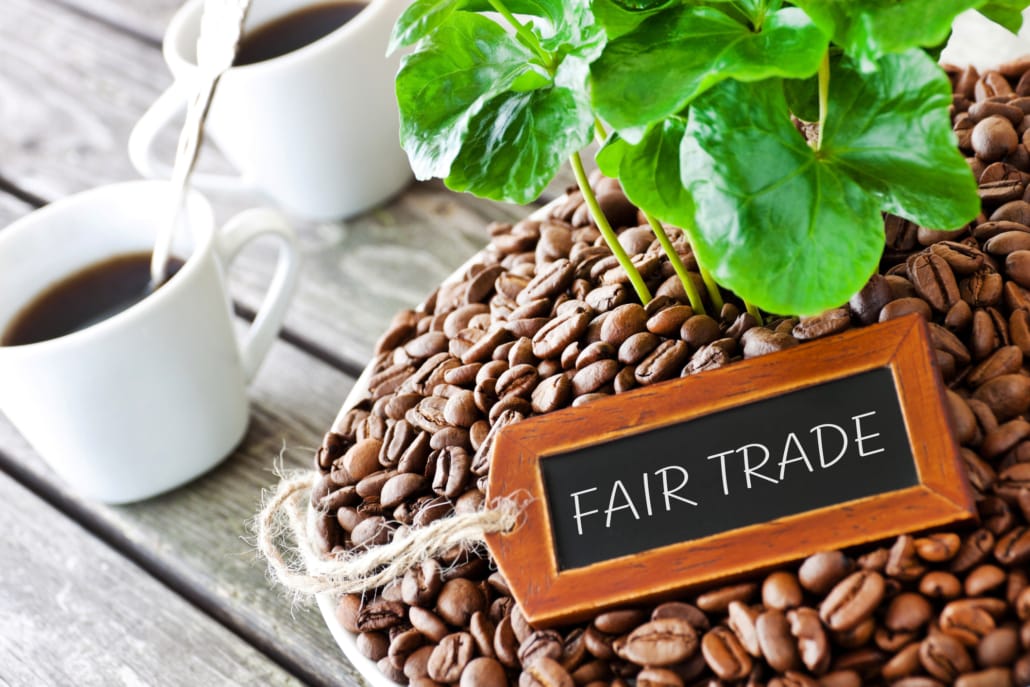
If you are a coffee producer or farmer and you wish to take part of it, you will get paid an above-market “fair trade” for your coffee.
In order to receive the higher payment, these products will have to meet specific Fair Trade certification requirements. These commonly include general labor, environmental and production standards.
Overall, there are several organizations that are allowed to certify Fair Trade.
For example, these can include the Fair Trade International, the World Fair Trade Organization, Fair Trade USA and others.
Furthermore, there are a total of 31 pages of standards to be considered.
These can range from the actual farm size, to reporting, to specifications on how coffee is being handled and labeled, and many other points.
The ideal goal is that the accomplished Fair Trade certification should empower the growers. And, it should further drive and solidify sustainable growth and equality within the coffee industry itself.
But, does the concept help local farmers in reality?
Can we say with true confidence, that Fair Trade is really ‘fair’? Can coffee and fair trade build a real sustainable relationship to be further built on?
Let’s discuss this further.
What are the Problems?
Many critics will say that the Fair Trade organizations have actually only little to show for, despite claiming to have helped local farmers all around the world.
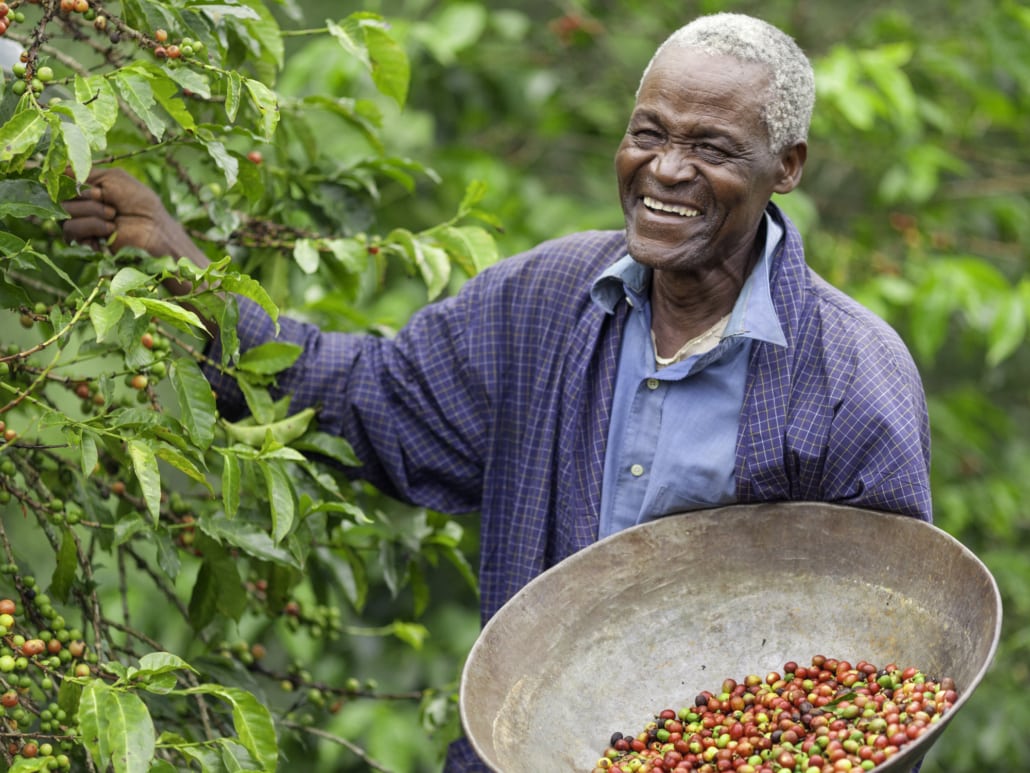
In fact, many organizations like FLO and Fair Trade USA seem to fail showing that the construct of Fair Trade has an actual positive long-term affect.
Doubts are growing, that you can actually identify a real positive impact on the livelihoods of underprivileged coffee growers.
Or, that the worldwide coffee market shows any substantial data. Which could indicate a real shift in revenue streams and income restructuring.
Commonly, various organizations claim the following.
“They are using a market-based approach that empowers farmers to get a fair price for their harvest, produce a decent living wage, and guarantees the right [for growers] to organize.”
These points may all seem good for farmers at first sight.
However, Fair Trade tends to limit actual market potential for producers. And, this also diminishes the actual benefits of coffee growers and workers.
Plus, many observers like to point out that the entire Fair Trade system has not really changed or evolved much.
Indeed, it basically stayed the same since it started as a movement. It seems to struggle to adapt to new market pressures and standards.
Please don’t misunderstand. The mission of Fair Trade is a very honorable and fantastic one.
Its main goal or purpose is to motivate us. Fair Trade presents us with alternative ways to make more conscious decisions and investments.
When it comes to fair trade coffee, any support is targeted at small-scale farmers in more than 30 countries worldwide.
In fact, according to the FLO – “around 25 million smallholders produce 70 to 80 percent of the world’s coffee.”
And, this is why Fair Trade tries to focus on small producer organizations.
How to Make Things Better?
As we already highlighted, Fair Trade is seemingly proving to have certain drawbacks and potential disadvantages.

These can affect the coffee, the consumer and most of all the farmers. Because they who want to grow and successfully sell their product.
Here are three potential ways we could consider to improve about coffee and Fair Trade.
- It may be surprising to some people, but the premiums that coffee drinkers are paying for Fair Trade do not always go directly to the farmers.
These payments are also used to maintain cooperatives and the Fair Trade model itself.
And, it is this Fair Trade model that growers are asked to participate and promised to eventually benefit from.
- Overall, the quality of Fair Trade coffee is not always consistent. Often times, the coffee’s quality is rather poor.
Especially, if you are comparing the product to other specialty coffees in the same price category.
- The Fair Trade model itself has not really evolved much. Often times, it failed to innovate significantly new things with technology.
Any newly introduced and integrated technology could help farmers to maintain their work processes and achieve higher incomes easier.
Quality and Fair Trade Coffee?
Some critics say that Fair Trade coffee is not always better quality coffee.
Of course, we are expecting and assuming a certain coffee quality, when buying Fair Trade coffee. Consumers usually expect the quality of coffee to be higher then.
Because, they also have to pay more compared to other options. However, an automatically higher quality is typically not the case.
What’s the reason for it?
When you are purchasing coffee labelled with a Fair Trade certification, this means that the price of coffee beans is guaranteed by the buyer.
In other words, the selling price is relatively higher and more or less fixed to a certain amount for you and me, who are the consumers in this scenario.
However, this does not necessarily mean that a higher percentage or share of the selling price is automatically given to the farmer.
And, it also does not mean that the coffee is automatically better. Just, because we are paying more for it.
The Price of Fair Trade Coffee
Here is how the price-setting and money distribution usually works.
Commonly, organizations like FLO and Fair Trade USA merely support coffee farmers and promote coffee sustainability by setting a certain “price floor”.
This price floor stands for a certain limit.
It determines on how low a price can be charged for a product. And, in our case this product would be coffee.
In practice, you are not allowed to go under this set price floor anymore then.
So, when the FLO or Fair Trade USA set a certain price for an amount of green coffee beans, for example, they will also index the same price floor to the New York Coffee Exchange price.
Fair Trade Coffee vs. Commodity Coffee
As a result and when the price of pound of coffee beans rises above the set price floor by the FLO, the Fair Trade price buyers are always paying higher compared to the price for commodity coffee.
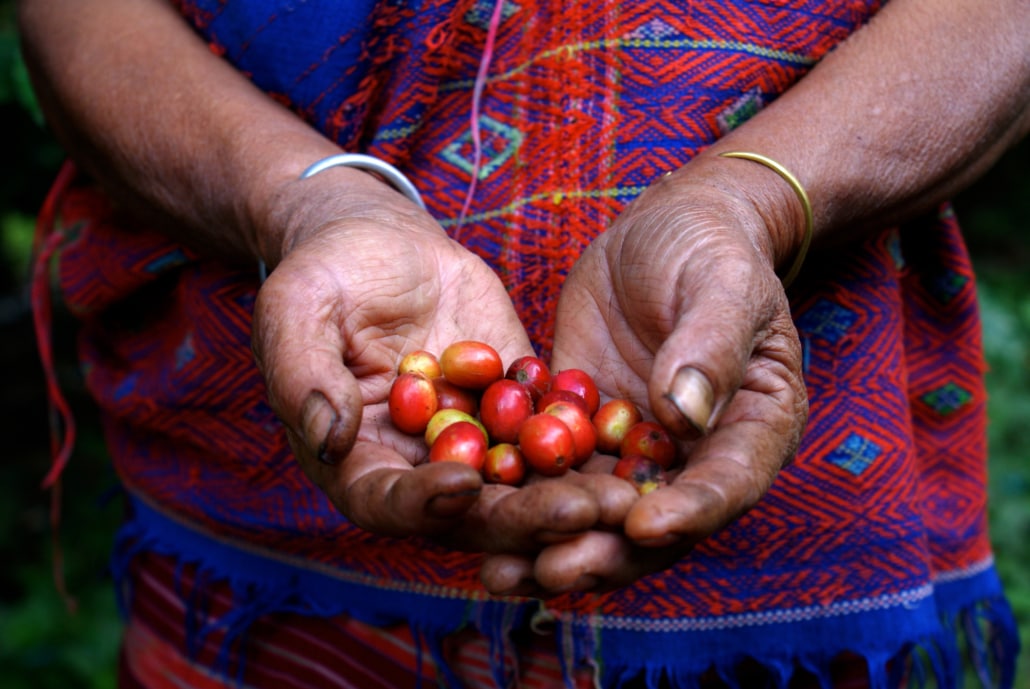
When we are trading coffee as a commodity, it is defined as a uniform product. Furthermore, it is interchangeable with another coffee of the same type.
Commodity coffee is the majority of all consumed coffee around the world.
It is also traded on the New York Coffee Exchange. And, its price is set on the dynamic world market.
Typically, buyers are choosing and switching to the lowest price offered on the market. Moreover, there is usually no real commitment to any long-term business relationships with farmers.
Regarding Fair Trade coffee, the issue is that commodity coffee is graded. This is in order to make sure the quality of coffee is standardized. No matter where the coffee beans are coming from.
Simply put, coffee of one grade from one place is going to be the same quality as other coffee of the same grade from somewhere else.
As a result, we know when buying specialty coffee and it’s of high grade quality beans, we are paying for the better quality.
So, how does this relate to Fair Trade coffee?
Consumerism and Fair Trade Coffee
In general, Fair Trade certified coffee can basically come in any quality grade.
But, its products are by default still part of the specialty coffee market.
Usually, coffee farmers can grow different ranges of quality beans. And, they are not able to sell them as Fair Trade coffee.
Simply because the number of buyers of Fair Trade is limited. Not every coffee consumer is particularly looking for Fair Trade products.
Many buyers choose to buy regular products with good quality instead.
As a consequence, various fair trade cooperatives may sometimes certify and sell lower quality beans at the higher Fair Trade price in the specialty coffee market.
Firstly, this can guarantee the required Fair Trade price, or price floor, for their coffee products.
And secondly, they may also profit from higher profit margins. Because, they can still sell their actual higher quality beans for higher prices on the regular market.
It may sound unrighteous at first sight.
But, it is actually hard to blame underprivileged farmers for this kind of action. In many cases, they are just trying to make a decent living.
And, it is also not typically them managing the marketing and purchase of their coffee beans. Instead, it is usually the organized cooperatives, in which they are just a smaller part of and not in full control.
Furthermore, if a cooperative understands that it can sell lower quality beans at a better price through Fair Trade, than higher quality beans. The cooperative will hardly hesitate to not consider it.
As a result, they may eventually focus more on investing and producing more lower-quality beans altogether.
That’s why critics are saying that Fair Trade coffee quickly becomes consistently lower quality for coffee consumers like us.
The Open Market Issue
Fair Trade coffee farmers usually also face issues successfully adapting to the developments of our open trade market.
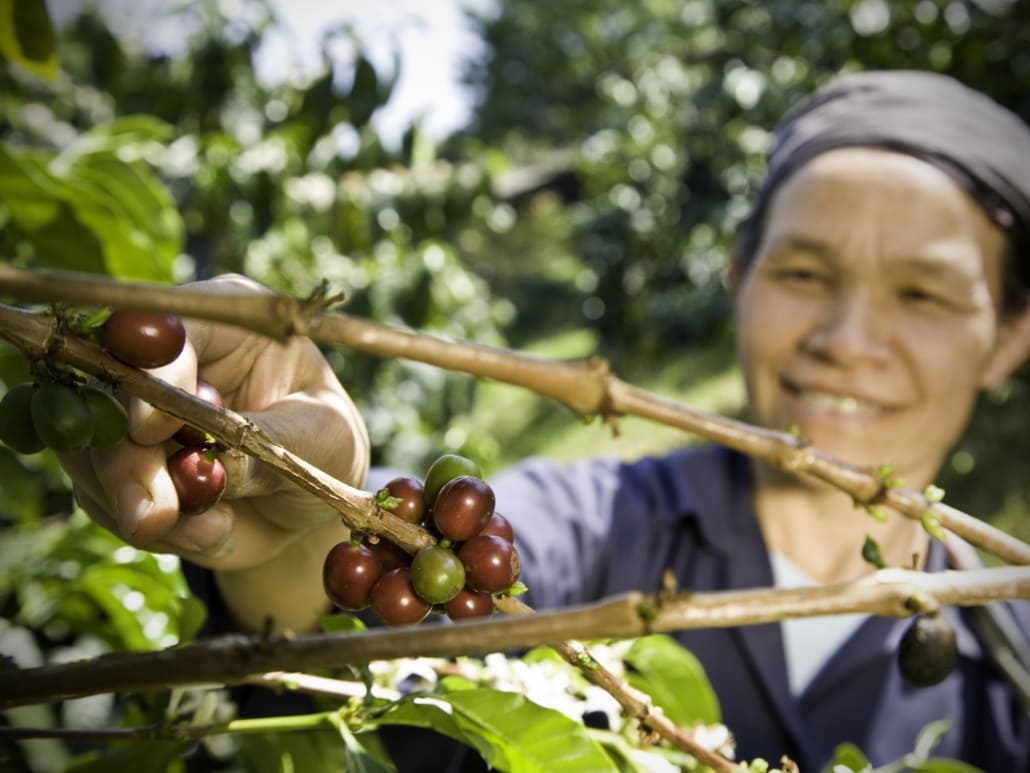
For example, what happens to them when the price of coffee continues to sky-rocket year over year?
Actually, this is what exactly happened on the free coffee market during the last few years.
Then, the set Fair Trade price can also become a somewhat obstacle not to overcome for many farmers and their respective cooperatives.
They may get stuck with their Fair Trade prices and miss out on higher market prices.
These farmers need to sell their beans as Fair Trade over time. Whereas, they could try to make a lot more money over time when successfully adjusting to open market needs.
For example, with smart investing in the development of quality beans, they could better compete with today’s market requests and our own individual consumer preferences and tastes.
So, one could say that the Fair Trade model is potentially limiting their full potential. Although, it is actually supposed to protect and support farmer’s labor value in cooperatives.
It can ultimately make it harder for them to sustainably grow in the coffee industry.
In comparison, private companies and independent farmers may be able to invest in specialty and high grade coffee easier and less complicated.
This may enable them to better compete and increase their income potential in the open market.
But, since Fair Trade farmers are rather protected on the one hand. They may not be able to set themselves up for business growth on the other hand.
Marketing and Fair Trade Coffee
Initially, the model of Fair Trade was meant to support local people from underprivileged communities.
But nowadays, also bigger companies like to make use of the attractive image and marketing potential of selling Fair Trade products of their own.
Many consumers are interested in the idea of Fair Trade these days. Hence, there is a huge market and clientele bigger companies want to target.
Typically, many well-informed and well-intentioned people are demanding Fair Trade, today. So, big corporations have jumped on the ‘Fair Trade band wagon’ as well.
For example, companies like Starbucks and Peet’s sell Fair Trade coffee, now.
Usually, these bigger companies sell their Fair Trade coffee through cooperatives, which they have organized by themselves.
Besides brand image and increased revenues, many bigger companies also have good intentions. Yes, they would want to make themselves look good. But they usually also want to help local farmers.
However and even though many farmers are drawn to these bigger companies and their cooperatives. Many times, it is the big companies that are benefitting the most again.
The Core Issue
So, what can we say? What is essentially the main issue or obstacle for Fair Trade coffee?
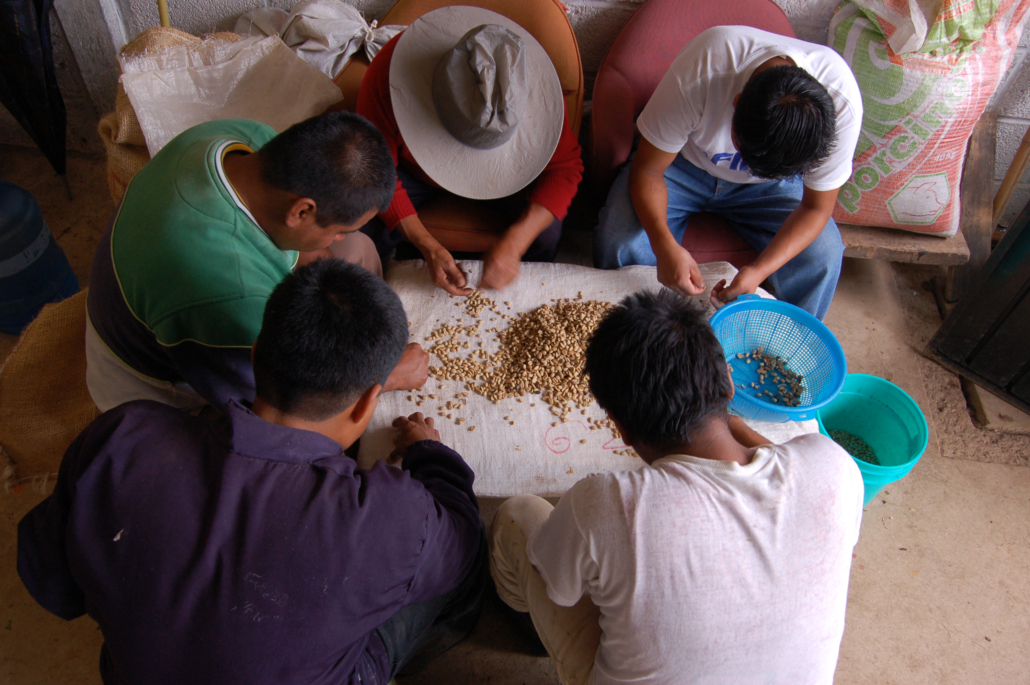
In order to get a better understanding, let’s have a look at one of the key messages of the Fair Trade Foundation.
It claims that, “Fair Trade is about ensuring that famers get paid enough to cover the cost of their labour and allows them to invest in improvements”.
Of course, the main idea is awesome and very honorable.
Furthermore, the same foundation states that its mission is not to help farmers control their production process in particular. And, the foundation is also not responsible for any marketing of the farmer’s products.
These two key business factors need to be handled by the farmers themselves.
However, this usually puts these things and responsibilities in the hands of bigger companies, which eventually represent and serve us, the buyers.
Many times, local farmers don’t have the financial power or knowledge network to successfully manage it on their own.
As a result, they may still work for low wages with no real influence. And, the bigger companies are actually making the money.
In fact, there is one interesting study, which researched 12 coffee plantations in Ethiopia and Uganda.
Shockingly, it showed that non-fair-trade certified farms actually paid higher wages to their workers. They also usually provided better working conditions than fair-trade certified farms in comparison.
So, if we really want to make a difference in the lives of the very poor workers out there. We actually need to pay attention to wage labor and overall living conditions.
Do You Have Any Solution?
Until now, we already highlighted many issues and obstacles between the relationship of coffee and fair trade.
But, what are actually better alternatives to the idea of Fair Trade coffee?
Are we able to make a bigger impact in the lives of coffee farmers? Do we have any possibility making a better contribution to their livelihoods?
Of course, the pressure and responsibility should not just lay on each one of us individually.
However, in a group and joint effort, I am positive that we could achieve quite a lot. Firstly, we should work on improving the current Fair Trade models.
This would help to make better coffee. And, most of all, it would tremendously make the lives of coffee growers better.
Nowadays, you can read many articles about coffee and fair trade out there. Some of them either criticize Fair Trade, while others may strongly promote it.
But, not many will actually offer or suggest us any alternatives and solutions.
Especially, how the average coffee lover and consumer could actually help. How can we possibly help? What can we do to improve coffee and coffee farming in the long-run?
Here are a few ideas, which I would like to share with you.
Potential Effective Alternatives to Fair Trade Coffee
-
Where to Put my Money?
Usually, Fair Trade products, such as coffee, are more expensive.
So, instead of buying pricier Fair Trade products, you could opt for regular coffee and use your saved money differently.
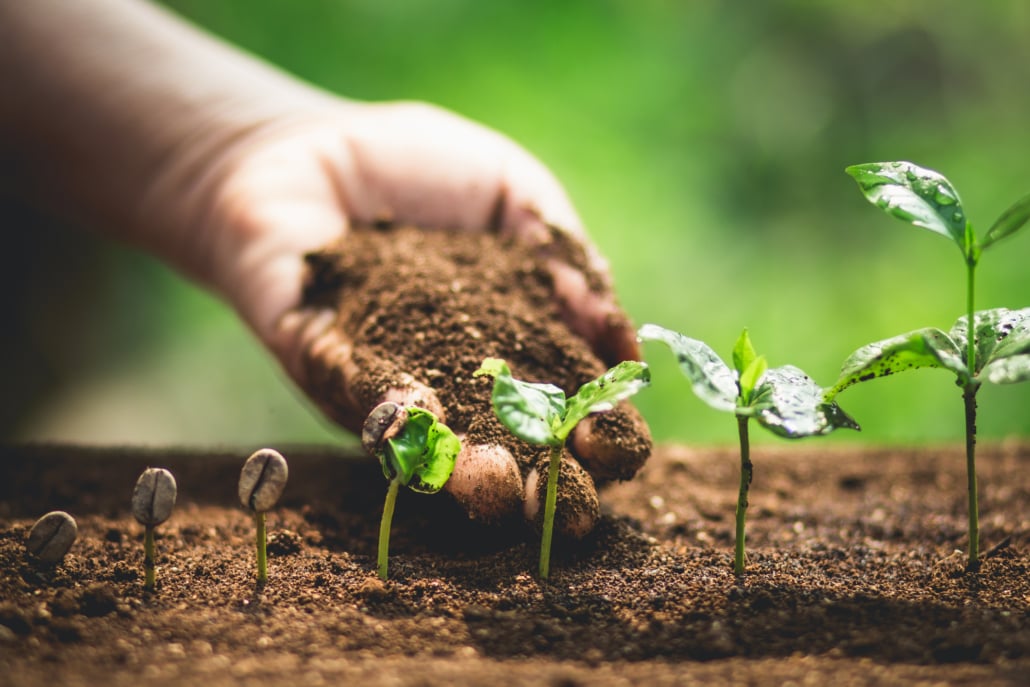
For example, you can give it to charities. There are quite a lot of great charities out there. Indeed, these will actually help farmers build and grow their business sustainably. One of these charities would be The Coffee Trust, for example.
Maybe you can check one of these out.
-
How to Buy Coffee?
Have you ever heard of buying coffee directly?
In fact, here at Siam Hills Coffee it is also the same system. This movement also has a modern coffee name. It is the fascinating trend of Third-Wave coffee.
Nowadays, Third-Wave coffee is becoming more and more popular. For instance, coffee buyers like Counter Culture Coffee, Intelligentsia and Stump Town Coffee Roasters are good examples.
-
Can I Help Fair Trade?
As I already mentioned a few times, the general idea and mission of Fair Trade is not bad at all.
Things just need to get improved and adjusted to current market, consumer and farmer needs.
For example, we can actively pressure Fair Trade organizations by contacting them. We can energetically ask them to overthink their standards and create better opportunities for farmers.
Indeed, this approach has shown many great results and improvements already.
During the last recent years, many Fair Trade organizations responded and acted to any shared criticism in a usually very understanding and open-minded manner.
For example, they have allowed larger farmers to certify Fair Trade coffee themselves. So, they have better opportunities to actively grow and scale up their business.
At the end of the day, the evolution and mission of Fair Trade is a constantly developing one.
As our society and consumerism grows and changes over time, Fair Trade and farmers essentially need to do the same.
Final Thoughts
In summary, we can improve the relationship between our beloved coffee and Fair Trade on a daily basis.
We are the consumers paying for the eventual products. Hence, the power should lay with us, right?
If we started pressuring coffee suppliers to know more about local working and living conditions and ask them to do more. I feel confident that they will listen to us and act accordingly.
Because, the buying power lies with us as a whole.
Hopefully and one day we can have it all. Great and more coffee, and better opportunities in life for everyone. Here at Siam Hills Coffee, we are actively and very passionately striving forward into this direction day by day.
So, how about you?
What is your opinion about the relationship between coffee and Fair Trade? Do you see more positive or negative aspects?
Are you maybe buying Fair Trade coffee on a regular basis? What are some possible solutions or alternatives to further improve Fair Trade coffee for you?
Feel free to share your thoughts and experiences with us.
Until then, stay safe, healthy and properly caffeinated.
Cheers!
Related Posts
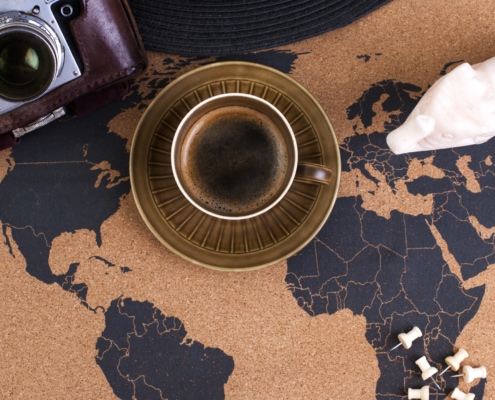 https://www.siamhillscoffee.com/wp-content/uploads/iStock-1074560652.jpg
1414
2121
Siamhillscoffee
https://www.siamhillscoffee.com/wp-content/uploads/coffee-logo.png
Siamhillscoffee2021-04-25 11:37:482021-04-25 11:37:488 Fascinating Facts About The History of Coffee – ‘A Drink For The Devil’ –
https://www.siamhillscoffee.com/wp-content/uploads/iStock-1074560652.jpg
1414
2121
Siamhillscoffee
https://www.siamhillscoffee.com/wp-content/uploads/coffee-logo.png
Siamhillscoffee2021-04-25 11:37:482021-04-25 11:37:488 Fascinating Facts About The History of Coffee – ‘A Drink For The Devil’ –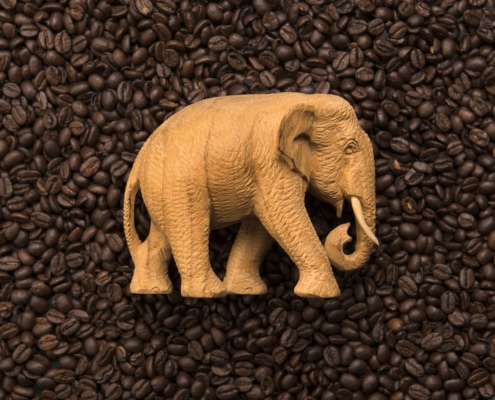 https://www.siamhillscoffee.com/wp-content/uploads/Elephant-coffee-–-The-new-luxury-coffee-–-How-great-is-it-1.jpg
1445
2075
Siamhillscoffee
https://www.siamhillscoffee.com/wp-content/uploads/coffee-logo.png
Siamhillscoffee2021-04-25 11:23:422021-04-25 11:23:42Elephant coffee – The new luxury coffee – How great is it?
https://www.siamhillscoffee.com/wp-content/uploads/Elephant-coffee-–-The-new-luxury-coffee-–-How-great-is-it-1.jpg
1445
2075
Siamhillscoffee
https://www.siamhillscoffee.com/wp-content/uploads/coffee-logo.png
Siamhillscoffee2021-04-25 11:23:422021-04-25 11:23:42Elephant coffee – The new luxury coffee – How great is it? https://www.siamhillscoffee.com/wp-content/uploads/Is-Latte-Art-Good-or-Bad-–-Does-Latte-Art-Make-our-Coffee-Better-or-Worse-–-1.jpg
1412
2122
Siamhillscoffee
https://www.siamhillscoffee.com/wp-content/uploads/coffee-logo.png
Siamhillscoffee2021-04-25 10:57:092021-04-25 11:02:29Is Latte Art Good or Bad? – Does Latte Art Make our Coffee Better or Worse? –
https://www.siamhillscoffee.com/wp-content/uploads/Is-Latte-Art-Good-or-Bad-–-Does-Latte-Art-Make-our-Coffee-Better-or-Worse-–-1.jpg
1412
2122
Siamhillscoffee
https://www.siamhillscoffee.com/wp-content/uploads/coffee-logo.png
Siamhillscoffee2021-04-25 10:57:092021-04-25 11:02:29Is Latte Art Good or Bad? – Does Latte Art Make our Coffee Better or Worse? – https://www.siamhillscoffee.com/wp-content/uploads/Filter-Coffee-and-Espresso-–-What-is-the-Difference-–-1.jpg
1397
2146
Siamhillscoffee
https://www.siamhillscoffee.com/wp-content/uploads/coffee-logo.png
Siamhillscoffee2021-04-03 02:55:042021-04-03 02:55:04Filter Coffee and Espresso – What is the Difference? –
https://www.siamhillscoffee.com/wp-content/uploads/Filter-Coffee-and-Espresso-–-What-is-the-Difference-–-1.jpg
1397
2146
Siamhillscoffee
https://www.siamhillscoffee.com/wp-content/uploads/coffee-logo.png
Siamhillscoffee2021-04-03 02:55:042021-04-03 02:55:04Filter Coffee and Espresso – What is the Difference? –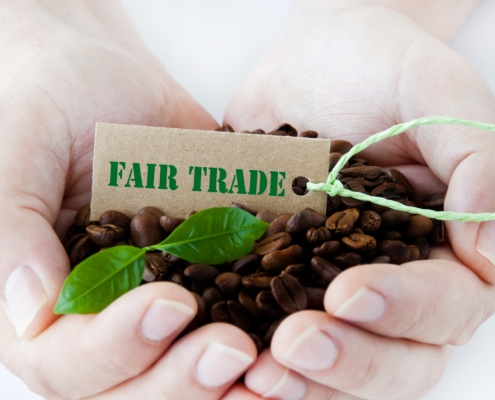 https://www.siamhillscoffee.com/wp-content/uploads/Coffee-and-Fair-Trade-–-Is-Fair-Trade-Coffee-Good-or-Bad-–-1.jpg
1414
2121
Siamhillscoffee
https://www.siamhillscoffee.com/wp-content/uploads/coffee-logo.png
Siamhillscoffee2021-03-21 04:14:092021-03-21 04:14:09Coffee and Fair Trade – Is Fair Trade Coffee Good or Bad? –
https://www.siamhillscoffee.com/wp-content/uploads/Coffee-and-Fair-Trade-–-Is-Fair-Trade-Coffee-Good-or-Bad-–-1.jpg
1414
2121
Siamhillscoffee
https://www.siamhillscoffee.com/wp-content/uploads/coffee-logo.png
Siamhillscoffee2021-03-21 04:14:092021-03-21 04:14:09Coffee and Fair Trade – Is Fair Trade Coffee Good or Bad? –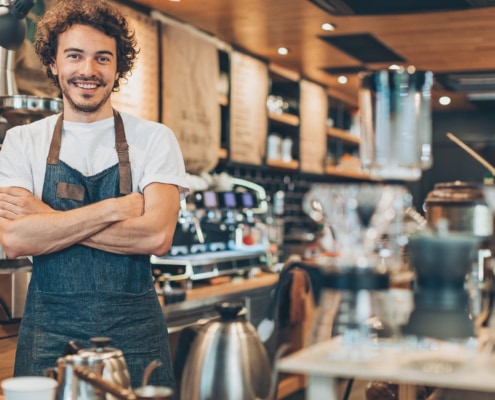 https://www.siamhillscoffee.com/wp-content/uploads/How-To-Open-A-Coffee-Shop-The-Coffee-Shop-Equipment-List-You-Need-1.jpg
1414
2121
Siamhillscoffee
https://www.siamhillscoffee.com/wp-content/uploads/coffee-logo.png
Siamhillscoffee2021-03-21 04:08:192021-03-21 04:08:19How To Open A Coffee Shop – The Coffee Shop Equipment List You Need
https://www.siamhillscoffee.com/wp-content/uploads/How-To-Open-A-Coffee-Shop-The-Coffee-Shop-Equipment-List-You-Need-1.jpg
1414
2121
Siamhillscoffee
https://www.siamhillscoffee.com/wp-content/uploads/coffee-logo.png
Siamhillscoffee2021-03-21 04:08:192021-03-21 04:08:19How To Open A Coffee Shop – The Coffee Shop Equipment List You Need https://www.siamhillscoffee.com/wp-content/uploads/Beer-Coffee-Everybodys-Dream-Come-True-–-1.jpg
1414
2121
Siamhillscoffee
https://www.siamhillscoffee.com/wp-content/uploads/coffee-logo.png
Siamhillscoffee2021-03-14 03:21:082021-03-14 03:21:08Beer Coffee – Everybody’s Dream Come True –
https://www.siamhillscoffee.com/wp-content/uploads/Beer-Coffee-Everybodys-Dream-Come-True-–-1.jpg
1414
2121
Siamhillscoffee
https://www.siamhillscoffee.com/wp-content/uploads/coffee-logo.png
Siamhillscoffee2021-03-14 03:21:082021-03-14 03:21:08Beer Coffee – Everybody’s Dream Come True – https://www.siamhillscoffee.com/wp-content/uploads/Coffee-Cupping-–-How-to-Professionally-Taste-Coffee-–-1-scaled.jpg
1707
2560
Siamhillscoffee
https://www.siamhillscoffee.com/wp-content/uploads/coffee-logo.png
Siamhillscoffee2021-02-20 05:38:122021-03-03 10:43:47Coffee Cupping – How to Professionally Taste Coffee –
https://www.siamhillscoffee.com/wp-content/uploads/Coffee-Cupping-–-How-to-Professionally-Taste-Coffee-–-1-scaled.jpg
1707
2560
Siamhillscoffee
https://www.siamhillscoffee.com/wp-content/uploads/coffee-logo.png
Siamhillscoffee2021-02-20 05:38:122021-03-03 10:43:47Coffee Cupping – How to Professionally Taste Coffee –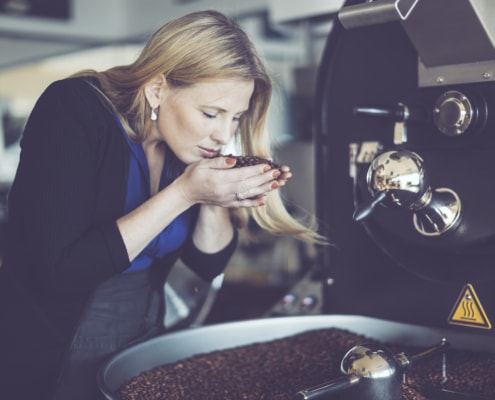 https://www.siamhillscoffee.com/wp-content/uploads/What-is-Coffee-Roasting-–-Everything-You-Need-to-Know-–-1.jpg
1414
2121
Siamhillscoffee
https://www.siamhillscoffee.com/wp-content/uploads/coffee-logo.png
Siamhillscoffee2021-02-20 05:19:592021-03-03 10:49:15What is Coffee Roasting? – Everything You Need to Know –
https://www.siamhillscoffee.com/wp-content/uploads/What-is-Coffee-Roasting-–-Everything-You-Need-to-Know-–-1.jpg
1414
2121
Siamhillscoffee
https://www.siamhillscoffee.com/wp-content/uploads/coffee-logo.png
Siamhillscoffee2021-02-20 05:19:592021-03-03 10:49:15What is Coffee Roasting? – Everything You Need to Know –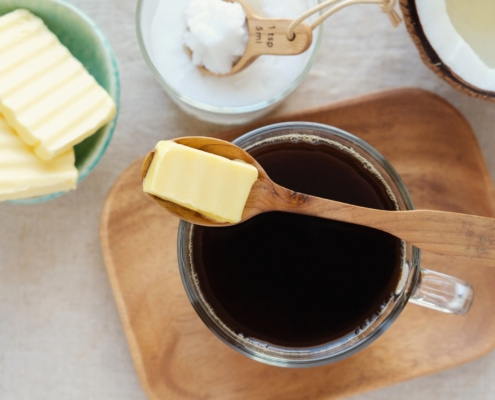 https://www.siamhillscoffee.com/wp-content/uploads/Butter-Coffee-Myths-versus-Facts-–-1.jpg
1414
2121
Siamhillscoffee
https://www.siamhillscoffee.com/wp-content/uploads/coffee-logo.png
Siamhillscoffee2021-02-20 05:14:182021-03-03 10:50:40Butter Coffee – Myths versus Facts –
https://www.siamhillscoffee.com/wp-content/uploads/Butter-Coffee-Myths-versus-Facts-–-1.jpg
1414
2121
Siamhillscoffee
https://www.siamhillscoffee.com/wp-content/uploads/coffee-logo.png
Siamhillscoffee2021-02-20 05:14:182021-03-03 10:50:40Butter Coffee – Myths versus Facts –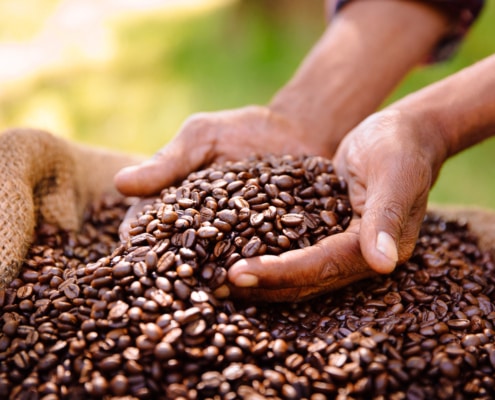 https://www.siamhillscoffee.com/wp-content/uploads/What-is-Specialty-Coffee-–-Everything-You-Need-to-Know-–-1-1.jpg
1414
2121
Siamhillscoffee
https://www.siamhillscoffee.com/wp-content/uploads/coffee-logo.png
Siamhillscoffee2021-02-20 05:10:372021-03-03 10:51:58What is Specialty Coffee? – Everything You Need to Know –
https://www.siamhillscoffee.com/wp-content/uploads/What-is-Specialty-Coffee-–-Everything-You-Need-to-Know-–-1-1.jpg
1414
2121
Siamhillscoffee
https://www.siamhillscoffee.com/wp-content/uploads/coffee-logo.png
Siamhillscoffee2021-02-20 05:10:372021-03-03 10:51:58What is Specialty Coffee? – Everything You Need to Know –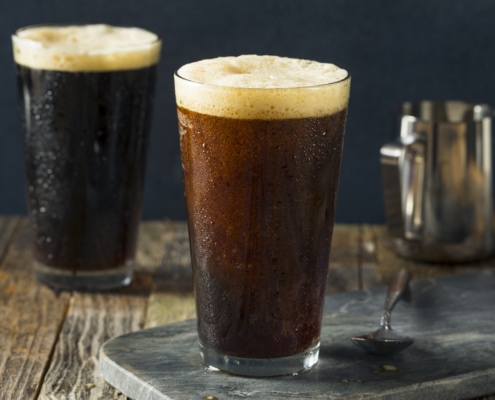 https://www.siamhillscoffee.com/wp-content/uploads/Nitro-Coffee-The-New-Big-Coffee-Trend-–-1.jpg
1414
2121
Siamhillscoffee
https://www.siamhillscoffee.com/wp-content/uploads/coffee-logo.png
Siamhillscoffee2021-02-20 05:03:032021-03-03 10:53:11Nitro Coffee – The New Big Coffee Trend –
https://www.siamhillscoffee.com/wp-content/uploads/Nitro-Coffee-The-New-Big-Coffee-Trend-–-1.jpg
1414
2121
Siamhillscoffee
https://www.siamhillscoffee.com/wp-content/uploads/coffee-logo.png
Siamhillscoffee2021-02-20 05:03:032021-03-03 10:53:11Nitro Coffee – The New Big Coffee Trend – https://www.siamhillscoffee.com/wp-content/uploads/Make-Your-Coffee-Healthy-–-Best-10-Ways-For-A-Better-Coffee-Experience-–-1.jpg
1414
2121
Siamhillscoffee
https://www.siamhillscoffee.com/wp-content/uploads/coffee-logo.png
Siamhillscoffee2021-02-12 08:13:182021-03-03 10:57:16Make Your Coffee Healthy – Best 10 Ways For A Better Coffee Experience –
https://www.siamhillscoffee.com/wp-content/uploads/Make-Your-Coffee-Healthy-–-Best-10-Ways-For-A-Better-Coffee-Experience-–-1.jpg
1414
2121
Siamhillscoffee
https://www.siamhillscoffee.com/wp-content/uploads/coffee-logo.png
Siamhillscoffee2021-02-12 08:13:182021-03-03 10:57:16Make Your Coffee Healthy – Best 10 Ways For A Better Coffee Experience – https://www.siamhillscoffee.com/wp-content/uploads/Decaf-Coffee-–-Is-Decaffeinated-Coffee-Good-or-Bad-–-1.jpg
1415
2120
Siamhillscoffee
https://www.siamhillscoffee.com/wp-content/uploads/coffee-logo.png
Siamhillscoffee2021-02-12 07:57:572021-03-03 11:01:42Decaf Coffee – Is Decaffeinated Coffee Good or Bad? –
https://www.siamhillscoffee.com/wp-content/uploads/Decaf-Coffee-–-Is-Decaffeinated-Coffee-Good-or-Bad-–-1.jpg
1415
2120
Siamhillscoffee
https://www.siamhillscoffee.com/wp-content/uploads/coffee-logo.png
Siamhillscoffee2021-02-12 07:57:572021-03-03 11:01:42Decaf Coffee – Is Decaffeinated Coffee Good or Bad? – https://www.siamhillscoffee.com/wp-content/uploads/We-Love-Coffee-–-10-Best-Reasons-Why-Coffee-is-Good-For-You-1-scaled.jpg
1707
2560
Siamhillscoffee
https://www.siamhillscoffee.com/wp-content/uploads/coffee-logo.png
Siamhillscoffee2021-02-12 07:43:082021-03-03 11:05:47We Love Coffee – 10 Best Reasons Why Coffee is Good For You –
https://www.siamhillscoffee.com/wp-content/uploads/We-Love-Coffee-–-10-Best-Reasons-Why-Coffee-is-Good-For-You-1-scaled.jpg
1707
2560
Siamhillscoffee
https://www.siamhillscoffee.com/wp-content/uploads/coffee-logo.png
Siamhillscoffee2021-02-12 07:43:082021-03-03 11:05:47We Love Coffee – 10 Best Reasons Why Coffee is Good For You –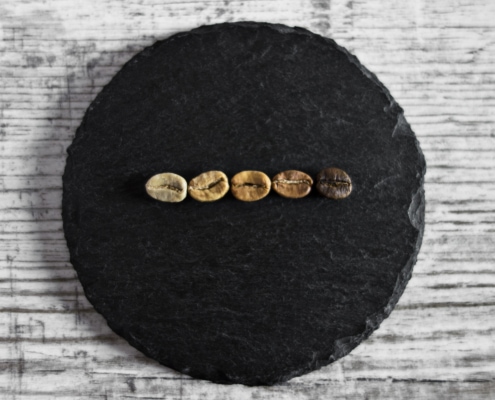 https://www.siamhillscoffee.com/wp-content/uploads/Coffee-Roast-Levels-1-scaled.jpg
1707
2560
Siamhillscoffee
https://www.siamhillscoffee.com/wp-content/uploads/coffee-logo.png
Siamhillscoffee2021-02-12 06:58:112021-03-03 11:44:54Coffee Roast Levels – The Differences Between Light, Medium and Dark Roasts –
https://www.siamhillscoffee.com/wp-content/uploads/Coffee-Roast-Levels-1-scaled.jpg
1707
2560
Siamhillscoffee
https://www.siamhillscoffee.com/wp-content/uploads/coffee-logo.png
Siamhillscoffee2021-02-12 06:58:112021-03-03 11:44:54Coffee Roast Levels – The Differences Between Light, Medium and Dark Roasts –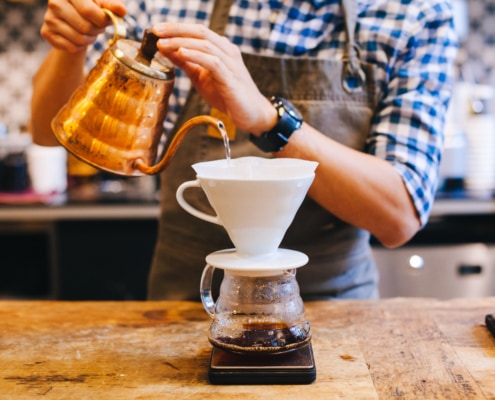 https://www.siamhillscoffee.com/wp-content/uploads/What-is-a-Filter-Coffee-–-A-Complete-Guide-–-1-scaled.jpg
1707
2560
Siamhillscoffee
https://www.siamhillscoffee.com/wp-content/uploads/coffee-logo.png
Siamhillscoffee2021-02-12 06:44:562021-03-03 11:48:24What is a Filter Coffee? – A Complete Guide –
https://www.siamhillscoffee.com/wp-content/uploads/What-is-a-Filter-Coffee-–-A-Complete-Guide-–-1-scaled.jpg
1707
2560
Siamhillscoffee
https://www.siamhillscoffee.com/wp-content/uploads/coffee-logo.png
Siamhillscoffee2021-02-12 06:44:562021-03-03 11:48:24What is a Filter Coffee? – A Complete Guide –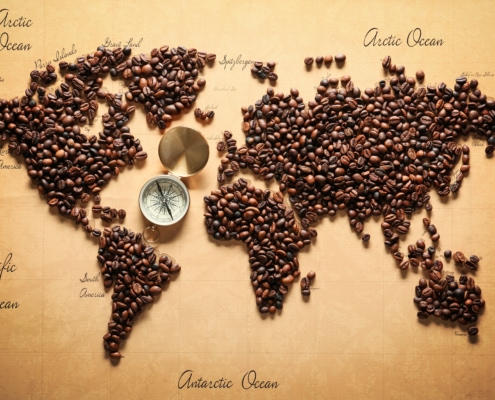 https://www.siamhillscoffee.com/wp-content/uploads/History-of-Coffee-1-scaled.jpg
1707
2560
Siamhillscoffee
https://www.siamhillscoffee.com/wp-content/uploads/coffee-logo.png
Siamhillscoffee2021-02-12 05:47:432021-03-03 11:53:23History of Coffee – Where it Comes From and Conquered the World –
https://www.siamhillscoffee.com/wp-content/uploads/History-of-Coffee-1-scaled.jpg
1707
2560
Siamhillscoffee
https://www.siamhillscoffee.com/wp-content/uploads/coffee-logo.png
Siamhillscoffee2021-02-12 05:47:432021-03-03 11:53:23History of Coffee – Where it Comes From and Conquered the World –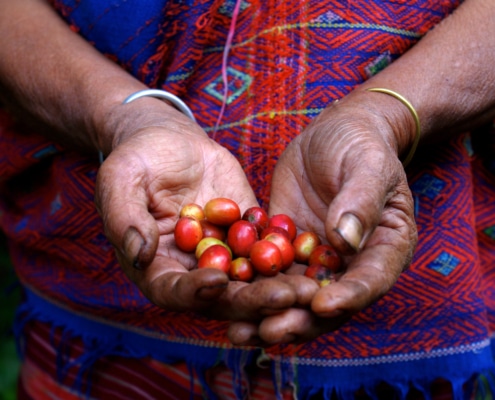 https://www.siamhillscoffee.com/wp-content/uploads/Fair-Trade-Coffee-–-What-Does-it-Really-Mean-1-scaled.jpg
1714
2560
Siamhillscoffee
https://www.siamhillscoffee.com/wp-content/uploads/coffee-logo.png
Siamhillscoffee2021-02-12 05:30:322021-03-03 11:57:01Fair Trade Coffee – What Does it Really Mean? –
https://www.siamhillscoffee.com/wp-content/uploads/Fair-Trade-Coffee-–-What-Does-it-Really-Mean-1-scaled.jpg
1714
2560
Siamhillscoffee
https://www.siamhillscoffee.com/wp-content/uploads/coffee-logo.png
Siamhillscoffee2021-02-12 05:30:322021-03-03 11:57:01Fair Trade Coffee – What Does it Really Mean? – https://www.siamhillscoffee.com/wp-content/uploads/A-Coffee-Journey-–-10-Steps-From-the-Seed-to-Your-Cup-–-1-scaled.jpg
1700
2560
Siamhillscoffee
https://www.siamhillscoffee.com/wp-content/uploads/coffee-logo.png
Siamhillscoffee2021-02-12 02:31:102021-02-20 14:09:30A Coffee Journey – 10 Steps From the Seed to Your Cup –
https://www.siamhillscoffee.com/wp-content/uploads/A-Coffee-Journey-–-10-Steps-From-the-Seed-to-Your-Cup-–-1-scaled.jpg
1700
2560
Siamhillscoffee
https://www.siamhillscoffee.com/wp-content/uploads/coffee-logo.png
Siamhillscoffee2021-02-12 02:31:102021-02-20 14:09:30A Coffee Journey – 10 Steps From the Seed to Your Cup –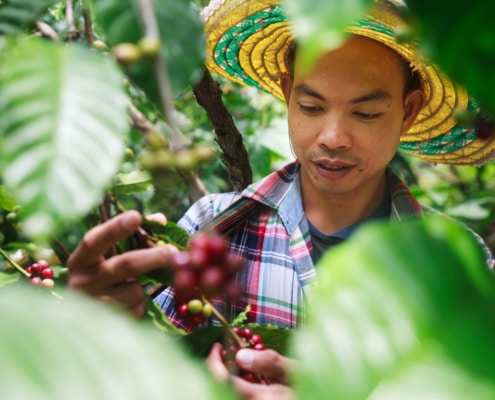 https://www.siamhillscoffee.com/wp-content/uploads/What-is-Shade-Grown-Coffee-–-Does-it-Make-our-Coffee-Taste-Better-–-1-scaled.jpg
1707
2560
Siamhillscoffee
https://www.siamhillscoffee.com/wp-content/uploads/coffee-logo.png
Siamhillscoffee2021-02-12 02:15:222021-03-03 13:36:34What is Shade-Grown Coffee? – Does it Make our Coffee Taste Better? –
https://www.siamhillscoffee.com/wp-content/uploads/What-is-Shade-Grown-Coffee-–-Does-it-Make-our-Coffee-Taste-Better-–-1-scaled.jpg
1707
2560
Siamhillscoffee
https://www.siamhillscoffee.com/wp-content/uploads/coffee-logo.png
Siamhillscoffee2021-02-12 02:15:222021-03-03 13:36:34What is Shade-Grown Coffee? – Does it Make our Coffee Taste Better? – https://www.siamhillscoffee.com/wp-content/uploads/Cold_Brew_Coffee_An_Honest_Opinion_All_You_Need_To_Know_1.jpg
3144
4608
Siamhillscoffee
https://www.siamhillscoffee.com/wp-content/uploads/coffee-logo.png
Siamhillscoffee2019-11-06 05:01:152021-03-03 13:30:17Cold Brew Coffee – An Honest Opinion – All You Need to Know
https://www.siamhillscoffee.com/wp-content/uploads/Cold_Brew_Coffee_An_Honest_Opinion_All_You_Need_To_Know_1.jpg
3144
4608
Siamhillscoffee
https://www.siamhillscoffee.com/wp-content/uploads/coffee-logo.png
Siamhillscoffee2019-11-06 05:01:152021-03-03 13:30:17Cold Brew Coffee – An Honest Opinion – All You Need to Know https://www.siamhillscoffee.com/wp-content/uploads/Do-Coffee-Drinkers-Live-Longer-Siam-Hills-Coffee-Blog.jpg
3141
3170
Siamhillscoffee
https://www.siamhillscoffee.com/wp-content/uploads/coffee-logo.png
Siamhillscoffee2019-05-20 04:45:512021-03-03 12:42:18Do Coffee Drinkers Live Longer?
https://www.siamhillscoffee.com/wp-content/uploads/Do-Coffee-Drinkers-Live-Longer-Siam-Hills-Coffee-Blog.jpg
3141
3170
Siamhillscoffee
https://www.siamhillscoffee.com/wp-content/uploads/coffee-logo.png
Siamhillscoffee2019-05-20 04:45:512021-03-03 12:42:18Do Coffee Drinkers Live Longer?
